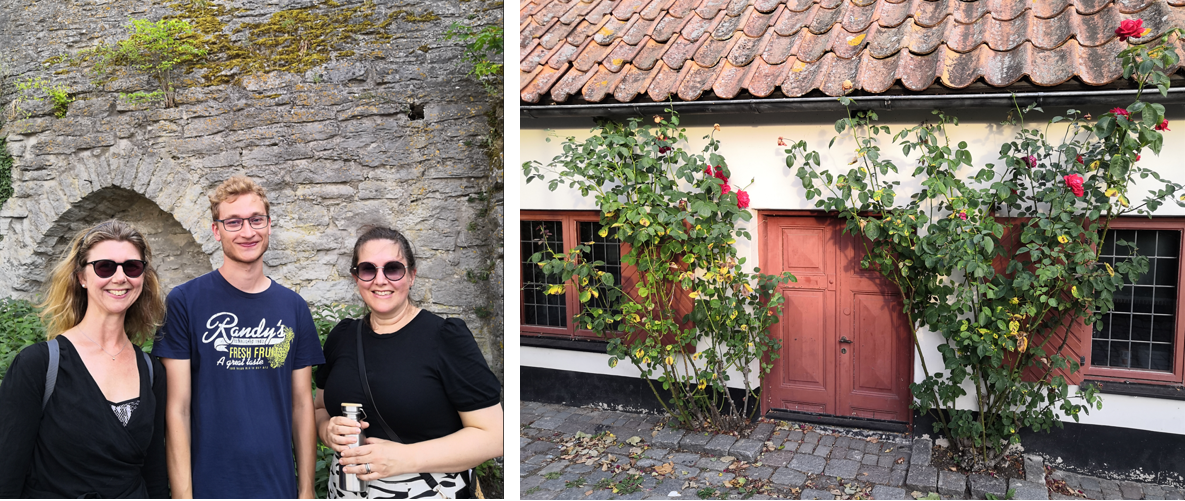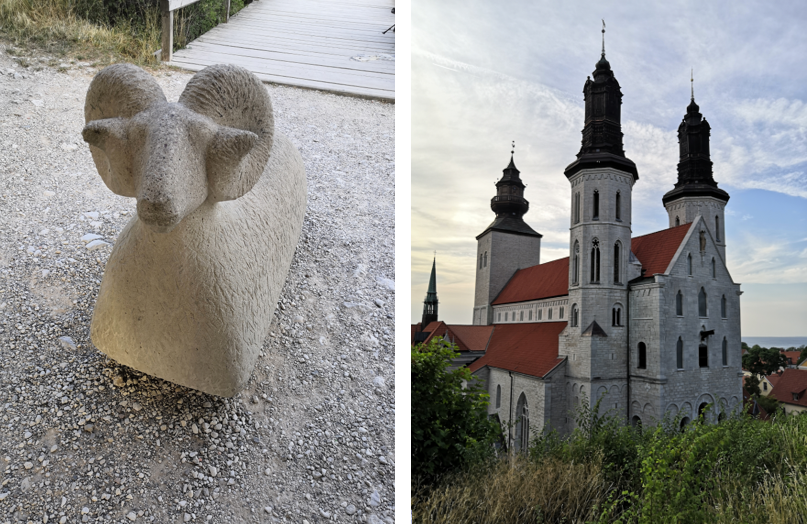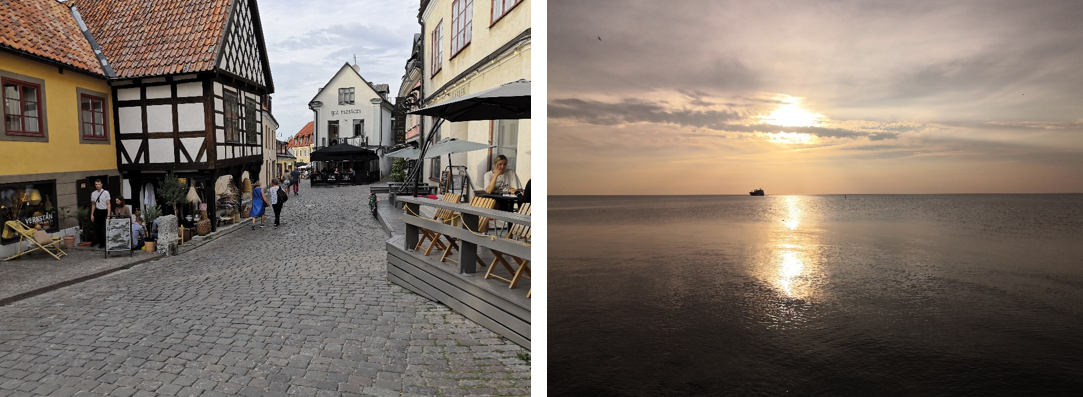Visby
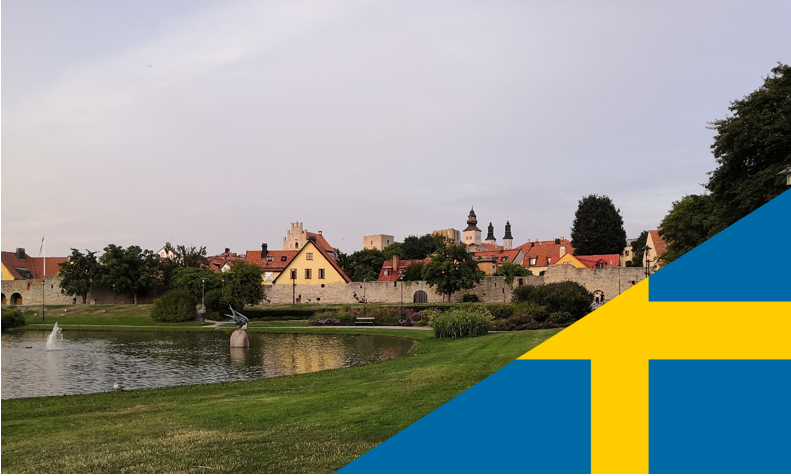
Day 1
Next stop on the list is Visby, a town with about 20,000 inhabitants on the west coast of the Swedish island of Gotland. To learn more about the history of the city, I met with World Heritage coordinator Louise Hoffman Borgö at the Gotland Museum. Starting the tour with the mysterious picture stones which were probably used as memorial stones back to 1400 years .
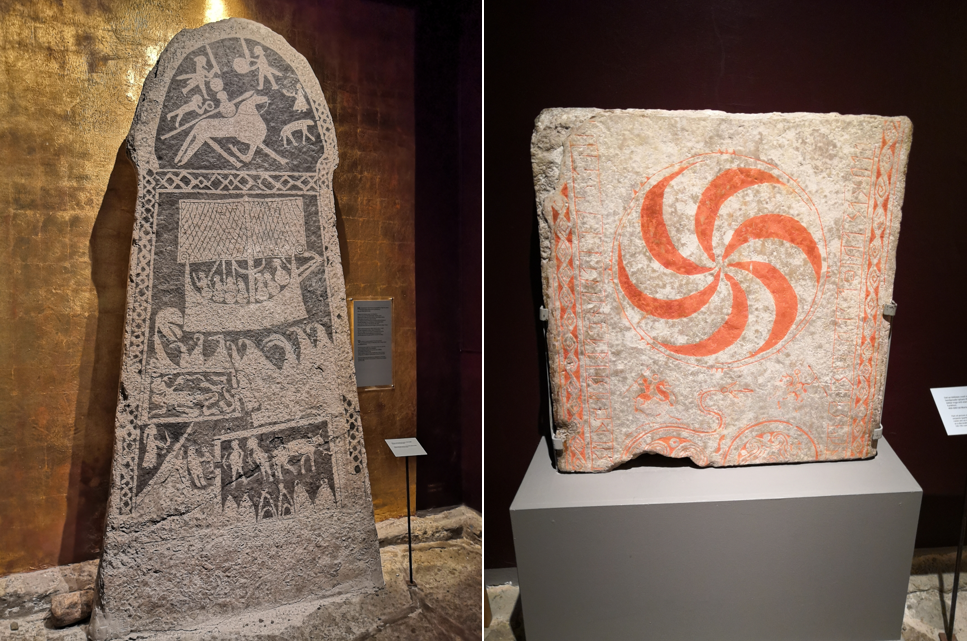
Visby lies very centrally in the Baltic Sea and this strategically good location strengthened Visby’s position as an important trading port already during the Viking Age. As a gateway to trade with the east, Visby was also of great interest to the Hanseatic League and one of the first members outside Germany. The city profited greatly from the trade of the Hanseatic League, many huge buildings were erected for the time and Visby is referred to as the medieval Manhattan.
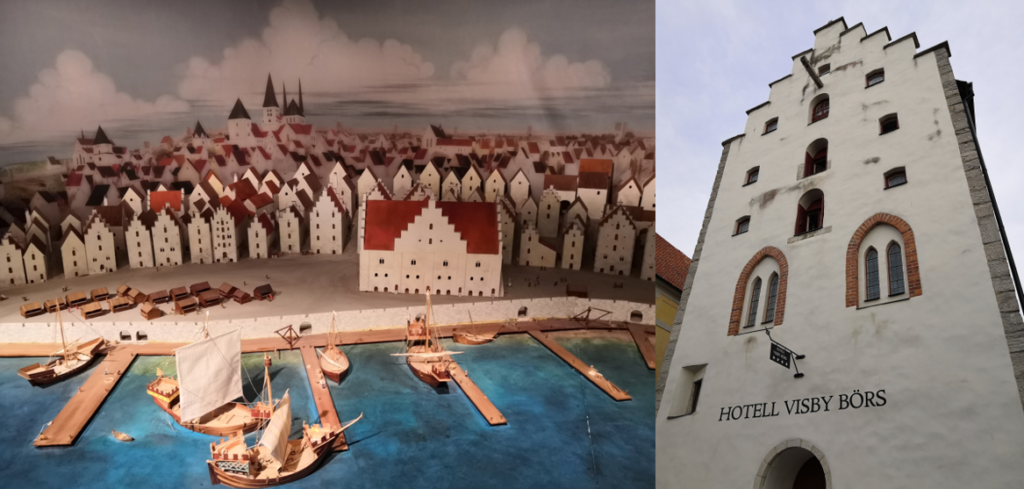
The museum also deals with the rapid decline in the town’s importance from the middle of the 14th century onwards: On the one hand, Visby was captured by the Danish King Waldemar in 1361, and on the other, improvements in shipping and navigation meant that the merchants of the Hanseatic League no longer had to rely on Visby as a stopover in the east. What may be bad for Visby at that time is fortunate for us: Due to the peace and quiet brought about by the loss of importance, the city has largely remained well preserved to this day.
Day 2
Next day started with a continuation of the guided tour through Visby, this time outdoors. Louise Hoffman Borgö, this time accompanied by her colleague Maria James, showed me around the UNESCO World Heritage Site. We visited the Visby city wall which is one of the best and also most completely preserved medieval city walls in Europe. It was errected beginning in the 13th due to conflicts with the people of the countryside of Gotland as the Hanseatic League consolidated its monopoly and forbid the Gotland farmers to take part in trade. It is more than 3 kilometres long and 27 large and 9 small towers still remain.
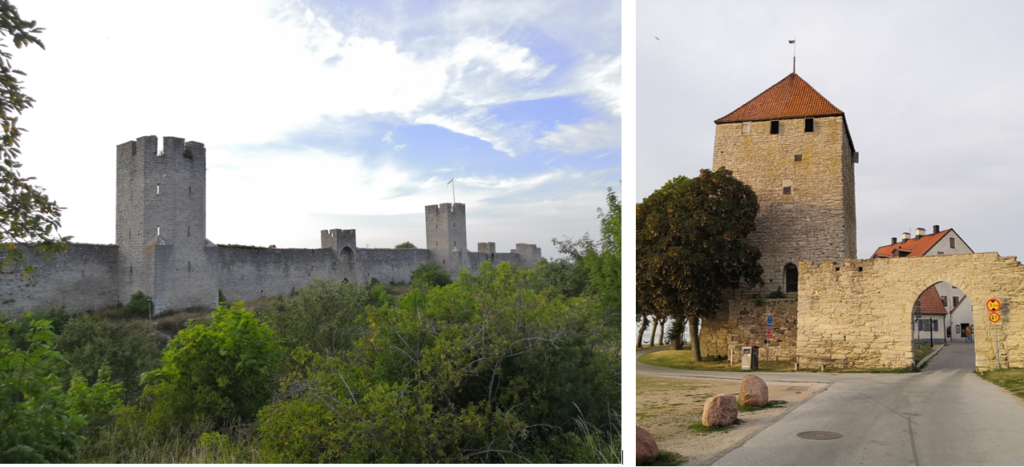
Equally impressive were the many church ruins that characterise the cityscape. The wealthy inhabitants liked to invest in magnificent church buildings. However, due to the economic decline and the Reformation, the many churches fell into disrepair and are now only preserved as imposing ruins.
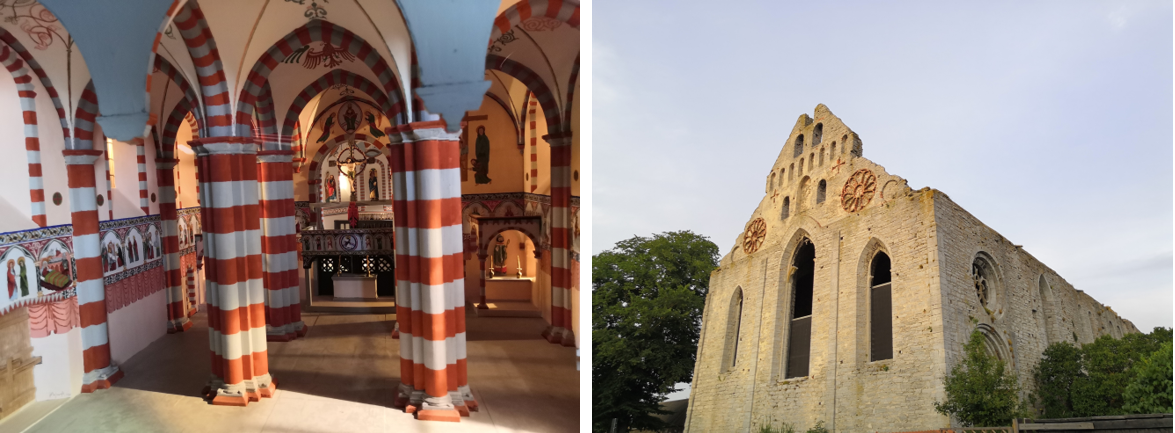
Louise and Maria also told me a lot about their work and the Visby of our times: Today the pitoresque small town is well known for its sheeps which are the symbol of Gotland that can be found everywhere. Equally characteristic are the rosebushes planted in front of many buildings. Gotland is one of the most popular holiday islands for Swedes in the summer and Visby is also the venue for the political Almedalen Week, the “Stockholm Week” parties and the big medieval festival “Medeltidsveckan”. It seems that the Unesco World heritage zone today is quite a liveable place. Once again big thanks to Louise and Maria for showing me around Visby!
